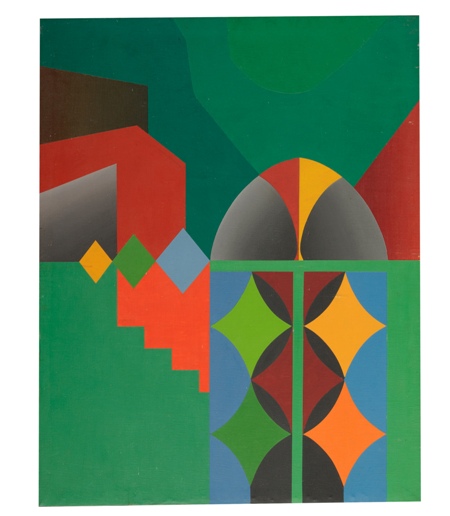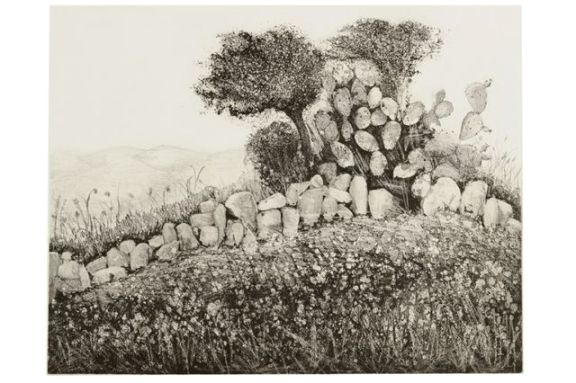Mintara Al-Batten – refers to an old watchtower on a hill overlooking Umm el-Fahem. It is also the title given to a collection of early paintings and prints by Walid Abu Shakra, the doyen of a family of artists born in this Arab city. This selection displayed in the Art Gallery, comprises the first part of a retrospective showcasing periods in his career. This exhibition will open on Saturday, December 24, 2011 at the Art Gallery in Umm el-Fahem. The second part, featuring later works, will go on display on January 5th at the Tel Aviv Museum of Art. This collaborative project, curated jointly by Farid Abu Shakra and Irith Hadad, stemmed from the friendship that developed over the years between the artist, his brothers Farid and Said (the gallery’s director) and the late Mordecai Omer, chief curator and director of Tel Aviv Museum.

Walid Abu Shakra, (b. 1946), was one of the first artists from the Palestinian community to study at a local art school, in his case, the Avni Institute of Art, Tel Aviv. In the early 1970s, shortly after graduation, he left Israel for London where he completed his studies and has lived and worked ever since.
The focus of this show is on the paintings and etchings that he produced in the 1970s and ’80s.
Dating from the year of his graduation from art school (1971) is a set of hard-edged abstract paintings in vivid ‘oriental’ colors. These compositions are striking for their harmonious balancing of geometric shapes that relate to Islamic architecture and ornament; domes, prayer niches, wall and floor patterning.

As illustrated in this show, from the early 1980s onwards, the artist abandoned painting and color in favor of the graphic medium. The atmospheric power and poetic character of his monochrome etchings are seen to steadily increase as the artist hones his technical skills. These prints executed in drypoint (where the image is incised into a plate with diamond or steel tipped needles) combined with aquatints for subtle tonal effects are among his outstanding pieces.
And his subject-matter? It has never changed. Although living far from home, Walid has for decades only depicted the landscapes of Umm el-Fahem. In conversation, he describes the process involved. On visits back home, he sketches and photographs trees and vistas remembered from his youth. Returning to England, to his studio, he relates that memories and nostalgia takes over, and these feelings he finds can not be represented in color, only black and white.
View from my Village (1975) is a typical piece. Executed in drypoint and aquatint, it brings together some of Walid’s main motifs: an olive tree, crumbling stone walls and clumps of cacti – a scene that appears to have both social and political implications. With building construction going on apace in his town, Walid is documenting fast- disappearing oases of pastoral beauty. But also, as a Palestinian, albeit living in self-imposed exile, the images that he depicts undoubtedly relate to nationalistic issues concerning this land and his people’s place in it.

Walid is not the only member of his family to exhibit at the Tel Aviv Museum or to employ cacti as a political allegory. A memorial show in 1990 at this venue paid tribute to his cousin Asim Abu Shakra, an artist of promise, who died at a tragically young age. In his paintings, the cactus, a resilient plant that marked out the boundaries of Palestinian farmland and villages for centuries, became the subject of his obsessive depiction, placed in a flowerpot and an enclosed space. At first Asim painted the plant as a naturalistic image, but it then became a metaphor for the stifling life led by many Palestinians in Israel. Finally, the plant, its outline gradually blurring, came to signify Asim’s waning health and approaching death.
Mintara Al-Batten – Walid Abu Shakra
Umm al-Fahm Art Gallery, closing date: April 10, 2012





